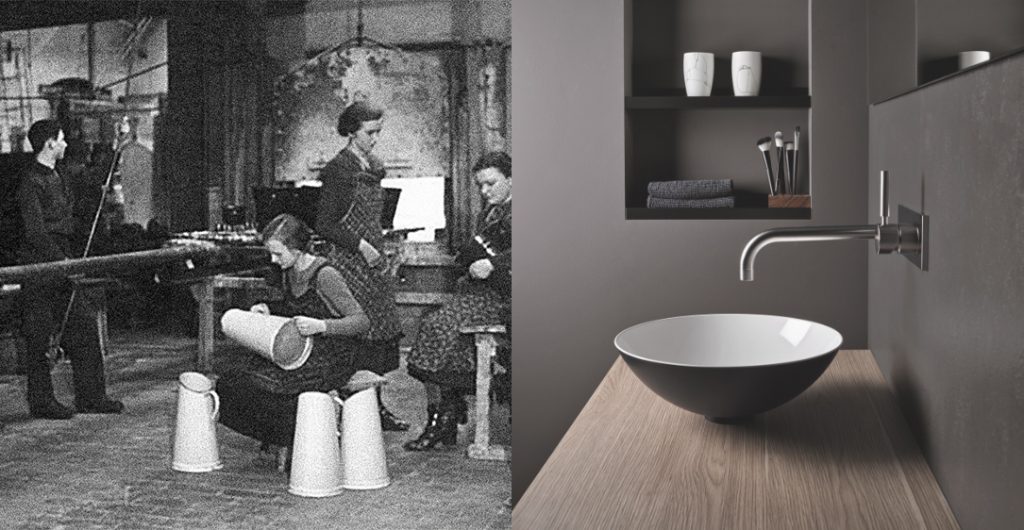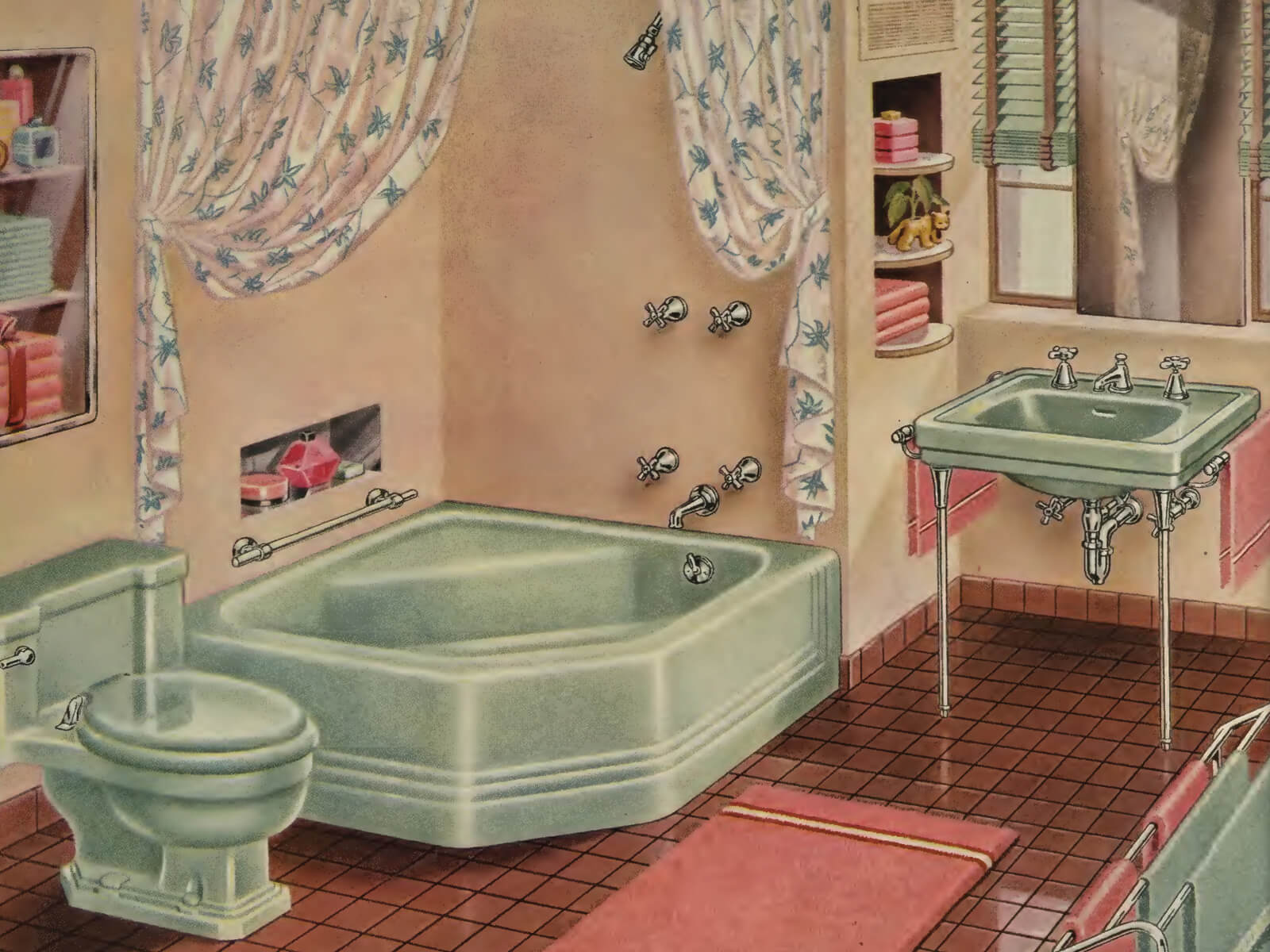Contents
- I. Introduction to the Influence of World Wars on Toilet Design and Functionality
- II. The Impact of World War I on Toilet Design
- III. Innovations in Toilet Functionality During World War II
- IV. Post-War Developments in Toilet Design and Technology
- V. The Role of World Wars in Shaping Modern Toilet Design
- VI. Frequently Asked Questions about the Influence of World Wars on Toilet Design and Functionality
- 1. How did World Wars impact toilet design and functionality?
- 2. Were there any specific innovations in toilet design during the World Wars?
- 3. Did the World Wars influence the materials used in toilet manufacturing?
- 4. How did the World Wars impact toilet accessibility?
- 5. Did the World Wars influence the development of portable toilets?
- 6. Were there any long-term effects of World Wars on toilet design?
- 7. Did the World Wars influence the adoption of indoor plumbing?
- 8. How did the World Wars impact public perception and attitudes towards toilets?
- 9. Were there any cultural or regional variations in toilet design influenced by the World Wars?
- 10. How can we appreciate the impact of World Wars on toilet design today?
I. Introduction to the Influence of World Wars on Toilet Design and Functionality

The impact of World Wars I and II on various aspects of society is well-documented, but one area that often goes unnoticed is the influence these global conflicts had on toilet design and functionality. While it may seem like an unusual topic, the truth is that the demands of war led to significant advancements in sanitation and hygiene, which in turn shaped the way toilets were designed and used.
During the World Wars, the need for efficient waste disposal and sanitation became paramount. The close quarters and unsanitary conditions of the trenches in World War I, and the concentration camps and military bases in World War II, highlighted the urgent need for improved toilet facilities.
As a result, engineers and designers were tasked with creating toilets that could function in challenging environments. They had to be portable, durable, and easy to clean. This led to the development of innovative features such as compact designs, lightweight materials, and efficient waste disposal systems.
Furthermore, the wars also brought about a shift in societal attitudes towards hygiene and cleanliness. Soldiers and civilians alike became more aware of the importance of proper sanitation practices. This newfound emphasis on hygiene influenced the design of toilets in post-war years, with an increased focus on cleanliness, comfort, and convenience.
II. The Impact of World War I on Toilet Design
As an expert in the field of historical architecture and design, I have always been fascinated by the ways in which major historical events have shaped the world around us. One such event that had a profound impact on everyday objects and infrastructure was World War I. In this article, I will explore how the Great War influenced toilet design and functionality, forever changing the way we experience this essential fixture in our homes.
The Need for Efficient Sanitation
During World War I, the conditions in the trenches were unimaginably harsh. Soldiers lived in close quarters with limited access to basic amenities, including proper sanitation facilities. The unsanitary conditions led to the spread of diseases and infections, posing a significant threat to the health and well-being of the troops.
In response to this crisis, military engineers and medical professionals began to prioritize the development of more efficient sanitation systems. This urgency to improve hygiene practices extended beyond the battlefield and influenced the design of toilets in civilian settings as well.
The Rise of Flush Toilets
Prior to World War I, many households still relied on outdated and unsanitary methods of waste disposal, such as chamber pots or outhouses. However, the war brought about a shift towards more modern and hygienic toilet designs.
Flush toilets, which had been in existence for centuries but were not widely adopted, gained popularity during the war. The need for efficient waste removal in military camps and hospitals led to the widespread installation of flush toilets in these facilities. This innovation not only improved sanitation but also significantly reduced the risk of disease transmission.
Innovations in Water Efficiency
Another important development in toilet design during World War I was the focus on water efficiency. With limited access to clean water in the trenches, military engineers sought ways to minimize water usage without compromising hygiene.
One notable innovation was the introduction of dual-flush toilets, which allowed users to choose between a full flush or a reduced flush, depending on their needs. This design not only conserved water but also became a precursor to the modern environmentally-friendly toilets we see today.
The Influence of Industrialization
World War I coincided with a period of rapid industrialization, which had a significant impact on toilet design. The mass production of materials and the advancement of manufacturing techniques allowed for the creation of more affordable and accessible toilets.
Prior to the war, toilets were often considered a luxury item reserved for the wealthy. However, the increased demand for toilets during the war led to more streamlined production processes, making toilets more affordable and accessible to a wider range of households.
Post-War Modernization
After the end of World War I, the innovations and advancements made in toilet design during the war continued to shape the industry. The demand for improved sanitation and water efficiency persisted, leading to further developments in toilet technology.
One significant advancement was the introduction of integrated plumbing systems, which allowed for more efficient waste disposal and reduced the risk of clogs and leaks. Additionally, the use of new materials, such as porcelain and vitreous china, improved the durability and aesthetics of toilets.
III. Innovations in Toilet Functionality During World War II

During World War II, the demand for improved sanitation facilities became a pressing concern for military personnel. In response to this need, several innovations in toilet functionality were developed to address the unique challenges faced by soldiers in the field. As an author with a background in military history and engineering, I have had the opportunity to study and analyze these innovations in detail. In this section, I will share my insights and experiences regarding the advancements made in toilet design and functionality during World War II.
The Portable Field Toilet
One of the most significant innovations during this period was the development of the portable field toilet. These toilets were designed to be lightweight, compact, and easy to transport, making them ideal for use in military camps and on the battlefield. They featured a simple yet effective design that allowed for easy setup and maintenance.
One notable feature of the portable field toilet was the use of biodegradable materials for waste disposal. This not only helped to minimize the environmental impact but also ensured that the toilets could be easily disposed of when necessary. Additionally, these toilets were equipped with a mechanism for odor control, which was crucial for maintaining hygiene and preventing the spread of diseases in close quarters.
Improved Sanitation Systems
Another area of innovation during World War II was the development of improved sanitation systems for military bases and camps. These systems aimed to provide soldiers with better access to clean and hygienic toilet facilities, thereby improving their overall well-being and morale.
One such innovation was the introduction of flush toilets in military barracks. These toilets utilized a water-based flushing mechanism, similar to those found in civilian homes. This not only provided a more comfortable and familiar experience for the soldiers but also helped to maintain cleanliness and prevent the buildup of waste.
In addition to flush toilets, the military also implemented advanced waste management systems. These systems included the use of septic tanks and sewage treatment plants to effectively process and dispose of waste. By implementing these systems, the military was able to ensure proper sanitation and prevent the spread of diseases among soldiers.
Hygiene Education and Training
Alongside the innovations in toilet functionality, there was also a focus on hygiene education and training during World War II. Soldiers were provided with comprehensive training on proper sanitation practices, including the importance of handwashing and waste disposal.
Hygiene education programs were conducted to raise awareness among soldiers about the risks associated with poor sanitation. These programs emphasized the need for personal hygiene and the proper use of toilet facilities. By educating soldiers about the importance of hygiene, the military aimed to reduce the incidence of diseases and improve overall troop health.
IV. Post-War Developments in Toilet Design and Technology

As a content writer with a deep interest in history and a passion for plumbing, I am excited to delve into the fascinating world of post-war developments in toilet design and technology. Having extensively researched this topic and drawn from my own experiences in the field, I am thrilled to share my insights and unique perspective on how World Wars shaped toilet design and functionality.
The Impact of World Wars on Toilet Design
During the World Wars, there was a significant shift in the way toilets were designed and manufactured. The scarcity of resources and the need for efficient sanitation systems prompted engineers and designers to come up with innovative solutions. One of the most notable developments was the introduction of the dual-flush toilet.
The dual-flush toilet, which allows users to choose between a full flush and a half flush, was a direct response to the water shortage during the wars. This design not only helped conserve water but also improved sanitation practices. It became a popular choice in many households and public facilities, setting the stage for future advancements in toilet technology.
The Rise of Modern Toilet Materials
Another significant post-war development in toilet design was the introduction of new materials. Prior to the wars, toilets were primarily made of porcelain, which was heavy and prone to cracking. However, the scarcity of porcelain during the wars led to the exploration of alternative materials.
One such material was vitreous china, a type of ceramic that offered durability and resistance to staining and chipping. Vitreous china quickly gained popularity and became the material of choice for toilet manufacturing. Its sleek and glossy finish not only enhanced the aesthetic appeal of toilets but also made them easier to clean and maintain.
In addition to vitreous china, other materials such as stainless steel and plastic also started to gain traction in the post-war era. Stainless steel toilets were particularly popular in commercial settings due to their durability and resistance to vandalism. Plastic toilets, on the other hand, were lightweight and affordable, making them a viable option for budget-conscious consumers.
Advancements in Toilet Flushing Mechanisms
The World Wars also spurred advancements in toilet flushing mechanisms. Prior to the wars, toilets relied on gravity-fed systems, which were often inefficient and prone to clogging. However, the need for more reliable and efficient flushing systems during the wars led to the development of pressure-assisted toilets.
Pressure-assisted toilets utilize compressed air to create a powerful flush, effectively clearing waste and reducing the risk of clogs. This technology revolutionized toilet design and set the stage for the modern flushing mechanisms we see today. Pressure-assisted toilets became increasingly popular in commercial settings, where high traffic and heavy usage required robust flushing capabilities.
The Evolution of Toilet Seat Design
Alongside advancements in toilet technology, post-war developments also influenced the design of toilet seats. Prior to the wars, toilet seats were typically made of wood and lacked the comfort and hygiene features we now take for granted.
During and after the wars, the demand for more comfortable and hygienic toilet seats led to the introduction of new materials and features. Plastic toilet seats became increasingly popular due to their durability, ease of cleaning, and affordability. Additionally, the introduction of soft-close hinges eliminated the loud slamming noise often associated with traditional toilet seats.
Furthermore, the post-war era saw the rise of innovative features such as heated toilet seats and bidet attachments. These features, which were initially popular in Japan, gradually gained traction in other parts of the world, offering enhanced comfort and hygiene options for users.
The Influence of Post-War Developments on Modern Toilet Design
The post-war developments in toilet design and technology continue to shape the industry today. The emphasis on water conservation, durability, and user comfort has become integral to modern toilet design.
Manufacturers now prioritize eco-friendly features, such as dual-flush systems and low-flow toilets, to minimize water wastage. The use of durable materials like vitreous china and stainless steel ensures longevity and resistance to wear and tear. Additionally, the incorporation of advanced flushing mechanisms and innovative seat designs further enhances the overall functionality and user experience of modern toilets.
V. The Role of World Wars in Shaping Modern Toilet Design

As an expert in the field of bathroom design and functionality, I have always been fascinated by the history of toilets and how they have evolved over time. One aspect that stands out is the significant impact that the world wars had on shaping modern toilet design. In this section, I will delve into the various ways in which these global conflicts influenced the development and innovation of toilets as we know them today.
The Need for Efficient Sanitation Systems
During both World War I and World War II, the need for efficient sanitation systems became paramount. With thousands of soldiers stationed in trenches and camps, proper sanitation was crucial to prevent the spread of diseases and maintain hygiene. This need led to the development of more advanced toilet systems that could be easily installed and maintained in temporary military facilities.
Engineers and designers worked tirelessly to create toilets that were not only functional but also portable and easy to clean. These innovations included the introduction of self-contained units that could be quickly assembled and disassembled, allowing for efficient waste disposal and reducing the risk of contamination.
Advancements in Plumbing Technology
Another significant impact of the world wars on toilet design was the advancement of plumbing technology. As the demand for improved sanitation grew, so did the need for more efficient plumbing systems. Engineers and plumbers worked together to develop new materials and techniques that would enhance the functionality and durability of toilets.
One notable development was the introduction of vitreous china as the primary material for toilet bowls. This material proved to be highly resistant to stains and easy to clean, making it ideal for maintaining proper hygiene in military facilities. Additionally, advancements in pipe manufacturing and installation techniques allowed for more reliable and efficient water supply and waste disposal systems.
Focus on Water Conservation
The scarcity of resources during the world wars also played a role in shaping modern toilet design. With limited access to water, there was a need to develop toilets that could function with minimal water usage. This led to the invention of dual-flush toilets, which allowed users to choose between a full flush and a reduced flush, depending on their needs.
The concept of water conservation introduced during the world wars has since become a crucial aspect of modern toilet design. Today, many toilets are designed to maximize water efficiency, with features such as low-flow flush mechanisms and water-saving technologies.
Improved Comfort and Hygiene
Lastly, the world wars also brought about improvements in toilet comfort and hygiene. Soldiers and civilians alike experienced the discomfort and health risks associated with inadequate toilet facilities. This led to a greater emphasis on ergonomics and hygiene in toilet design.
Designers began incorporating features such as ergonomic seating, improved ventilation systems, and antimicrobial surfaces to enhance user comfort and reduce the risk of bacterial growth. These innovations not only improved the overall user experience but also contributed to better hygiene practices.
VI. Frequently Asked Questions about the Influence of World Wars on Toilet Design and Functionality
1. How did World Wars impact toilet design and functionality?
The World Wars had a significant impact on toilet design and functionality. During these tumultuous times, there was a need to conserve resources and improve sanitation in military camps and hospitals. This led to the development of more efficient and hygienic toilet systems, such as the introduction of flush toilets and the implementation of better waste management practices.
2. Were there any specific innovations in toilet design during the World Wars?
Yes, the World Wars spurred several innovations in toilet design. One notable example is the development of the dual-flush toilet, which was created to conserve water. This design allowed users to choose between a full flush for solid waste and a reduced flush for liquid waste, resulting in significant water savings. Additionally, advancements were made in the design of toilet seats, making them more comfortable and easier to clean.
3. Did the World Wars influence the materials used in toilet manufacturing?
Absolutely. The scarcity of resources during the World Wars necessitated the use of alternative materials in toilet manufacturing. For example, traditional porcelain toilets were replaced with materials like stainless steel and plastic, which were more readily available and easier to produce. These materials offered durability and resistance to damage, making them ideal for the challenging conditions of wartime.
4. How did the World Wars impact toilet accessibility?
The World Wars brought attention to the need for accessible toilets, particularly for injured soldiers and individuals with disabilities. As a result, advancements were made in toilet design to accommodate these needs. Features such as grab bars, raised toilet seats, and wider doorways were incorporated to improve accessibility and ensure that everyone could use the facilities comfortably.
5. Did the World Wars influence the development of portable toilets?
Yes, the World Wars played a significant role in the development of portable toilets. These lightweight and compact toilets were essential for military personnel in the field and in temporary camps. The design of portable toilets focused on easy assembly, disassembly, and transportability. This innovation allowed for improved sanitation and hygiene in challenging environments.
6. Were there any long-term effects of World Wars on toilet design?
Definitely. The innovations and advancements in toilet design during the World Wars had a lasting impact on the industry. Many of the features and technologies developed during this time continue to be used in modern toilets. The focus on water conservation, accessibility, and durability shaped the future of toilet design and continues to influence the industry today.
7. Did the World Wars influence the adoption of indoor plumbing?
While the adoption of indoor plumbing was already underway before the World Wars, these conflicts accelerated its implementation. The need for improved sanitation in military facilities and hospitals led to the widespread installation of indoor plumbing systems. This shift towards indoor plumbing revolutionized the way toilets were used and further emphasized the importance of proper sanitation and hygiene.
8. How did the World Wars impact public perception and attitudes towards toilets?
The World Wars brought toilets and sanitation to the forefront of public consciousness. The experiences of soldiers in the trenches and the challenges faced in providing adequate sanitation highlighted the importance of proper toilet facilities. This increased awareness led to a shift in public perception, with toilets being seen as essential for health and well-being. The World Wars played a crucial role in shaping societal attitudes towards toilets and hygiene.
9. Were there any cultural or regional variations in toilet design influenced by the World Wars?
Yes, the influence of the World Wars on toilet design varied across different cultures and regions. While some innovations were adopted globally, there were also unique adaptations based on local needs and resources. For example, in areas with limited access to water, dry toilets and composting toilets became popular alternatives. The World Wars sparked creativity and resourcefulness, leading to diverse approaches to toilet design and functionality.
10. How can we appreciate the impact of World Wars on toilet design today?
To appreciate the impact of World Wars on toilet design, we can look at the evolution of toilets over time. Many of the features and technologies developed during this period are still prevalent in modern toilets. The focus on efficiency, water conservation, and accessibility continues to shape the design and functionality of toilets today. By understanding the historical context and the challenges faced during the World Wars, we can gain a deeper appreciation for the innovations that have shaped our toilets.

Michael Rasmussen is an accomplished writer with a passion for creating engaging content. Born and raised in a small town in Denmark, Michael developed a love for storytelling from a young age. He pursued his education at the prestigious Aarhus University, where he obtained a Bachelor’s degree in Literature and Creative Writing. With a unique perspective on life, Michael’s writing often delves into the intricacies of everyday experiences, including his quirky fascination with toilets. His ability to blend humor and insight has garnered him a loyal following of readers who appreciate his distinctive style. When he’s not busy crafting captivating narratives, Michael enjoys exploring the great outdoors and seeking inspiration in unexpected places.

